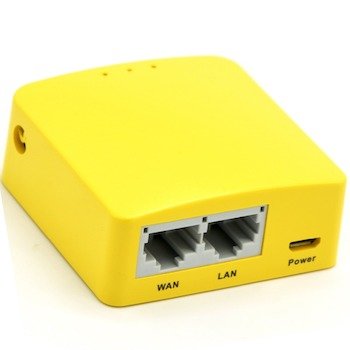
sfx2000
Members-
Posts
631 -
Joined
-
Last visited
Content Type
Forums
Store
Crowdfunding
Applications
Events
Raffles
Community Map
Everything posted by sfx2000
-
After reviewing the schematics.... I stand corrected... eth0 - realtek RTL8211E which is tied to the H3/H5 gigabit designware MAC onboard the SoC eth1 - realtek RTL8253B USB3.0 to 1Gbe, will be limited by USB2 obviously, but a better choice perhaps than the Asix chip for some packet offloading Oddly enough, WiFi is hanging off the SDIO bus, schematic calls out the Ampak AP6212 SOM, which is a broadcom/cypress WiFi 802.11n/BT 4.2 (which is connected to UART3) which would have made this board much more interesting for IoT things. Would be interesting to see things there, as @martinayotte points out, it looks like a generic RTL8723 - and there, some have BT, and some do not... what's odd with R1S, there's an IPX-I connection on the module, but I'm not seeing an antenna here - patch antenna inside the housing? Would be nice with the SPINOR on-board, as 16MB flash there can do both u-Boot and host OpenWRT on that flash part, and then secondary boot to SDIO for Amrbian... Anyways - the R1 seems to be the better solution, more balanced across interfaces, and includes the option for the eMMC. even though it's only H3 - I might order one, as it does pique my interest to get an ARM variant of the code I'm currently doing on AR9331 (MIPS) - but since I have a Neo and Neo2 already, I can pretty much fake it there, just not as tidy of a box. For R1S - only reason why one might consider the H5 variant would be OpenVPN, as there, the H5 is going to perform better than H3, but for general routing purposes, H3 might be a better choice as it'll clock higher than H5, and since routing it all about clocks without a dedicated switch on the board... after all, H3/H5 are application driven, compared to chips like Marvell MV3720, or others like this, which are purpose built for communications/networking.
-
It's really hard to do in a power efficient manner - there are SDR's that can do all the right waveforms, the signalling, etc, but most of this is on an FPGA - the UMTS and LTE protocols are fairly complex, much more so that 802.11 wifi, and we know how hard that can be. It's also a massive minefield of patents, which makes GPL are very real challenge. Osmocom.org has made the most progress towards a free modem - https://osmocom.org/
-

Review Review videos : NVIDIA Jetson Nano
sfx2000 replied to NicoD's topic in Reviews, Tutorials, Hardware hacks
Nice work - which audience are you attempting to approach here? Keep in mind that Jetson Nano is a gateway into the whole nVidia ecosystem/platform first - as a consumer/enthusiast SBC application, it's a secondary consideration. With Nano - it gets complicated, and L4T has always been that way - seems like it's getting better, but apt-update/upgrade can sometimes not be a good thing, based on prior experience with this platform. -
Contact them - they have both host and embedded solutions, and they seem to be more open than others... For power suitable chips - other options are Marvell, Broadcom/Cypress, and Qualcomm/Atheros, and we know they're fairly closed with current chipsets. SDIO is going to be preferred over USB/UART for both power and performance in a handset device
-
Read the Flags... It's there - https://developer.arm.com/architectures/instruction-sets/simd-isas/neon/neon-programmers-guide-for-armv8-a/introducing-neon-for-armv8-a/fundamentals-of-armv8-neon-technology
-
Check Redpine - they might have something available that one could use... https://www.redpinesignals.com/
-
notes Board in hand - well made, comes with their custom OpenWRT spin based on 19.07 - easy to run, WG/OpenVPN clients and servers supported, along with GL-Inet's vertical services RGMII across the Topaz switch, which is common with many 3720 boards. Solid/Stable at 1GHz
-
Any card vendor can be counterfeited... I've done wholesale with a trust vendor/distributor, and have got caught out with bad cards on all three brands you mention. That being said - SanDisk and Samsung are vertically integrated - e.g. they design, build, sell - I've had good luck with both, but Kingston is good, as they partner up with trusted flash vendors.
-

What binaries are fetched and used by the Build script?
sfx2000 replied to BumbaBumba's topic in Off-topic
I'd ask for what purpose are SBC's going to be used for - and to that end, the full-scope of that purpose. That's putting on the IT groups hat - I've been on both sides, so it's useful to step into their shoes, as IT supports the business, not the employees or their special projects. There's a lot of projects where they might be useful, but how would that fit within the larger organizations business. If you're on the engineering side - yes, we like to tinker, but find a good purpose, and then someone that can support the business side, and let them pull the project through... Easier to pull a string than to push a rope. -
I the market is maturing, and as such, the dynamics are changing these days. The race to the bottom has weeded out the weaker players, and I think we've seen the end of the really cheap boards for the most part. Amlogic is focusing on their market sectors, and there, they've found a fair amount of success, I would say the same for Rockchip and AllWinner as they also start to focus on which OEM's are important to their bottom line. There will be those that run at cost/below cost, such as Xunlong, but Orange Pi emits boards that are sometimes unsustainable outside of the BSP that they support. It costs a fair amount to develop and build a board at scale - I did this as a scoping experiment myself, looking for a niche play with a quality board, but numbers did not work, even if I did production in Shenzen vs. other location, at a price point folks would be willing to pay.
-
Yeah, looks like one of them - at least it's not XR819
-
RTL single stream on the WiFi for the R1S - ASIX USB-1Gbe on one of the ports, so for routing it's going to have some challenges... USB 2.0 PHY on one of the ports, and the CPU is going to be busy doing all routing in SW. (maybe the H3 variant might be a better match compared to H5 because of that USB2.0 PHY, but H5's gigabit is generally good for FriendlyARM boards) I'm assuming that the H5 variant will be similar to NanoPi NEO2 for thermals and clocks Good artists copy - great artists steal... Remarkable that the ID is similar to the GL-Inet Mango (and other small GL-Inet devices) - expected more from FriendlyARM there.
-
Can't speak for armbian - but there's no difference performance wise on target code between native vs. crossbuilds on GCC - at least not that I've seen. Since the toolchains are already sorted out for Armbian - is it worth the effort to do a native toolchain? Might be, but someone would have to do that effort. Openwrt does build native, BTW, but that's because someone did do the effort to make it happen - but again, I've not seen any difference in performance - I'd rather have a stable AMD64 that can build for any supported ARCH, and that problem is already solved.
-
Benchmarking 2.4GHz - might add that the AP side is also important. Since we're in a price sensitive category - I've found the GL-Inet AR300M to be a decent point of reference for the 802.11n 2*2:2 stream config. It's fairly cost friendly, and it runs openwrt with the ath9k drivers, so fairly sorted out and stable. It's the ath9k driver that makes this box a win. Some of the newer consumer AP's - they try to do non-standard 802.11ac things in 2.4 (802.11ac is official only for 5GHz), and I've seen numerous interop issues across vendors.
-
Yeah, the moving walkway is nearing it's end on the TS-469L.... Doesn't mean it'll roll over and die tomorrow mind you - it's just not going to get future updates from QNAP at some point, but the HW itself will likely outlive the drives inside.
-
How old of a chromebox - is it still supported by ChromeOS? (FWIW - there are more than a few ChromeBoxes and ChromeBooks that are end of support, so it's a legit question) More recent versions of ChromeOS have linux app support via Crostini - much easier that Crouton or Gallium that break security of the platform by going into dev mode.
-
hard to read - that's a good point in general with ANSI in general - part of the problem for me is that I have challenges in color vision, so some distros and/or terminals default to items I honestly have trouble with.
-
Sorry to hear that - this is a forum for discussion on Linux, and specifically Armbian. Plenty of Windows forums out there, and if you're looking at Android - XDA is a good place to start.
-
Hmm... actually yes - is the role of Armbian to teach users about Linux? Probably not, IMHO, they're better served by the Pi Folks - Raspbian is good training wheels for folks dipping their toes into Linux The average Armbian user is not a paying customer - there are no Service Level Agreements dictating that any bug of a defined severity level must be fixed within a specific timeframe. So yes - just ignore it for the most part, step in if is sounds fairly interesting - sounds a bit mean spirited perhaps, but generally folks will step in to help out, and if it's really a bug that is directly traceable back to Armbian code - then if it pops up enough, fix it directly, or delegate it to someone who is maintaining it (better to delegate, as that person knows the code likely better). So if someone has problematic hardware - "my whoflungpI Zero2W with the built in XYZ WiFi adapter doesn't work" - well, it might be crap hardware, and in the sub-$50USD field of hacker boards and TV boxes, there's a fair amount of crap - can't fix bad hardware, and there, someone will tell them, use something that does work.
-
Quick glance at the numbers, I'd say yes... 20:30:48: 1008MHz 0.35 12% 2% 8% 0% 1% 0% -203885°C 0/4 obviously not true - but one could test it out and run the clocks up, lol... To paraphrase - what's cooler than being cool - ice cold...

